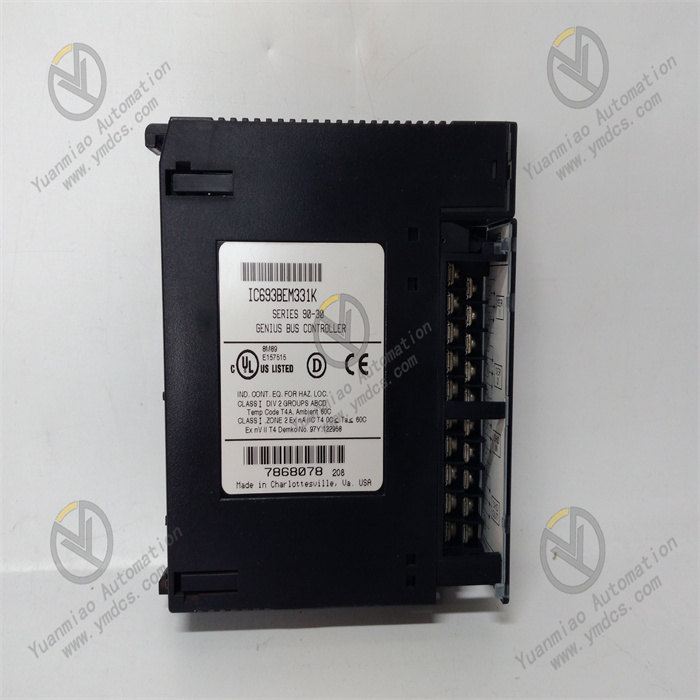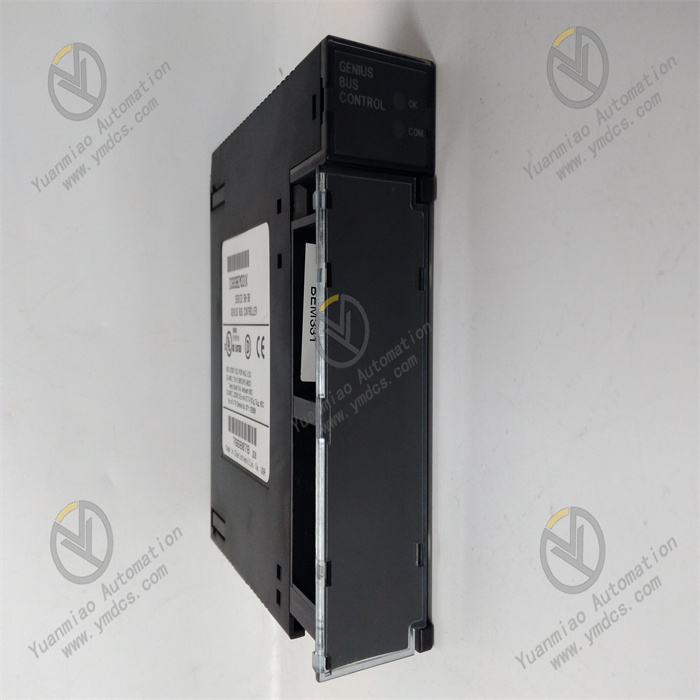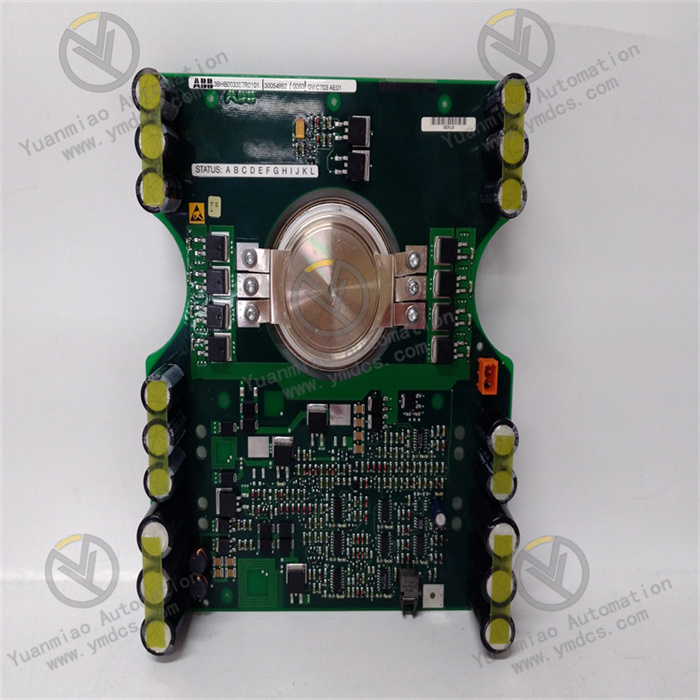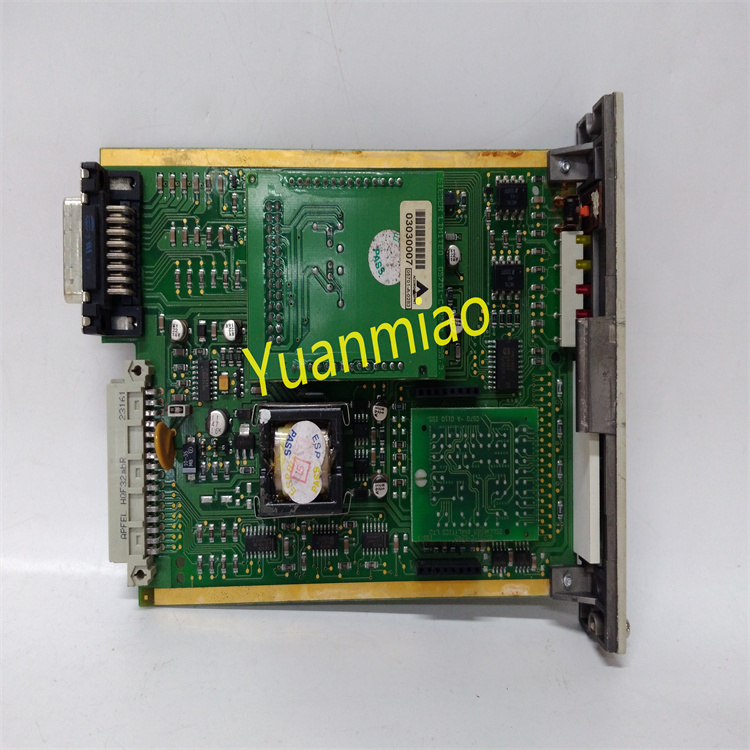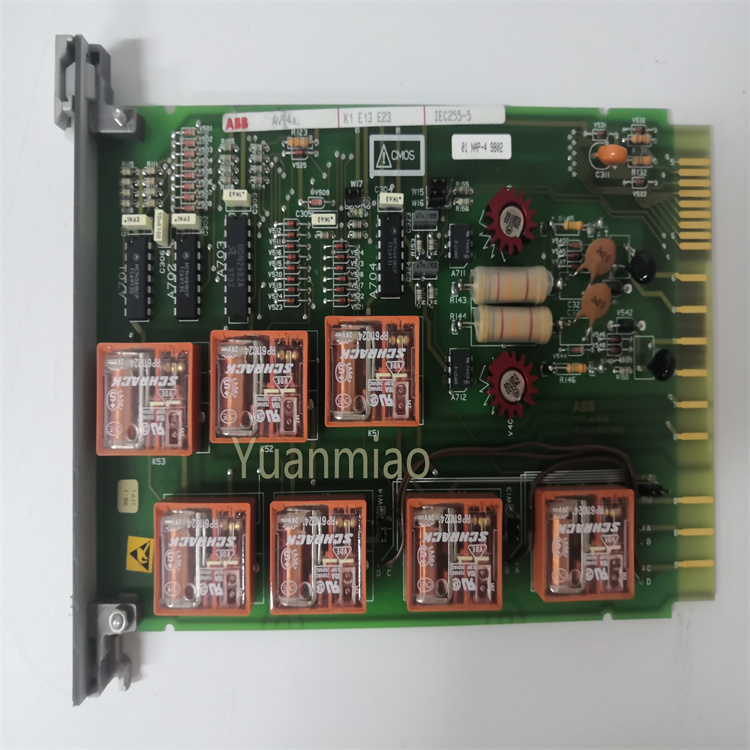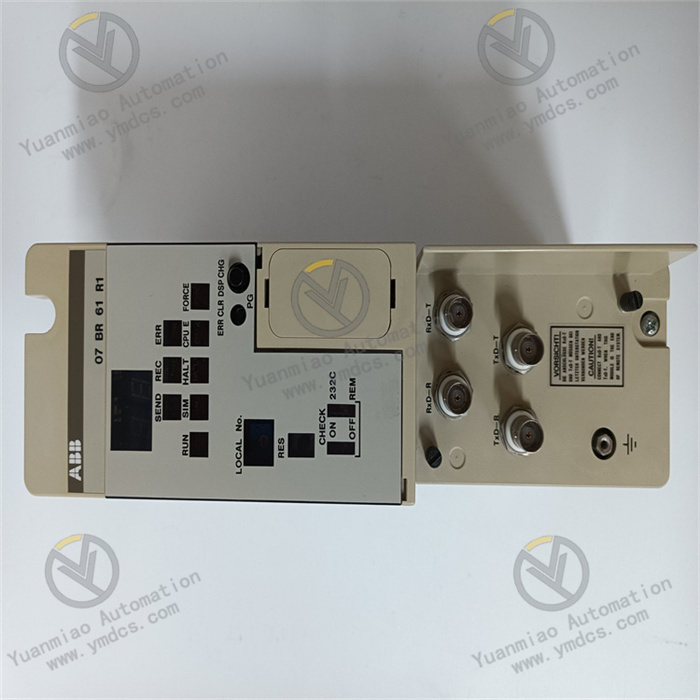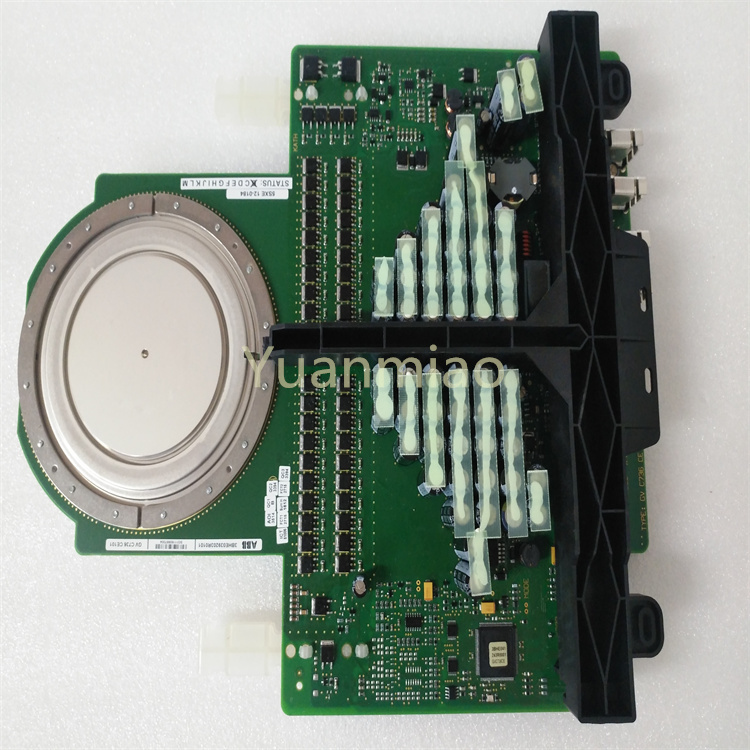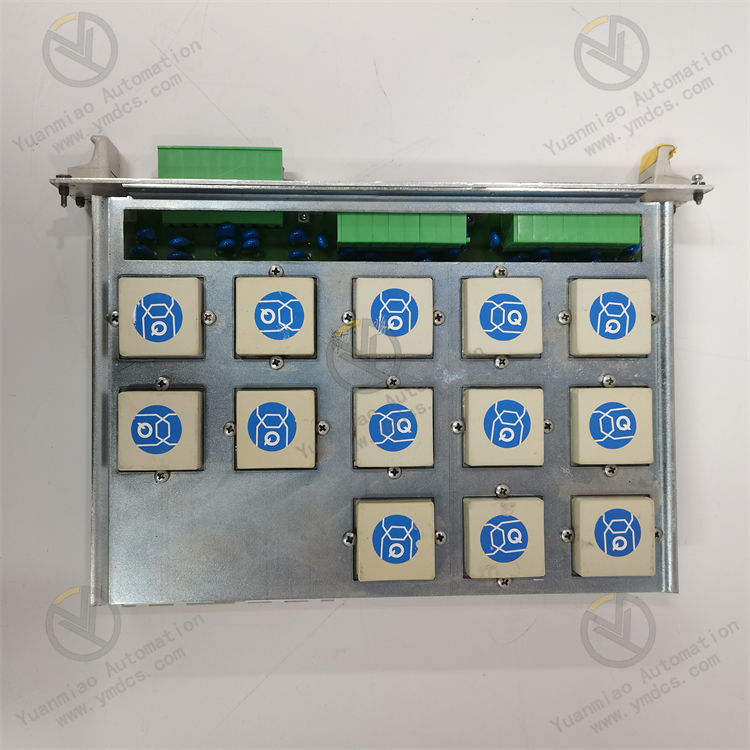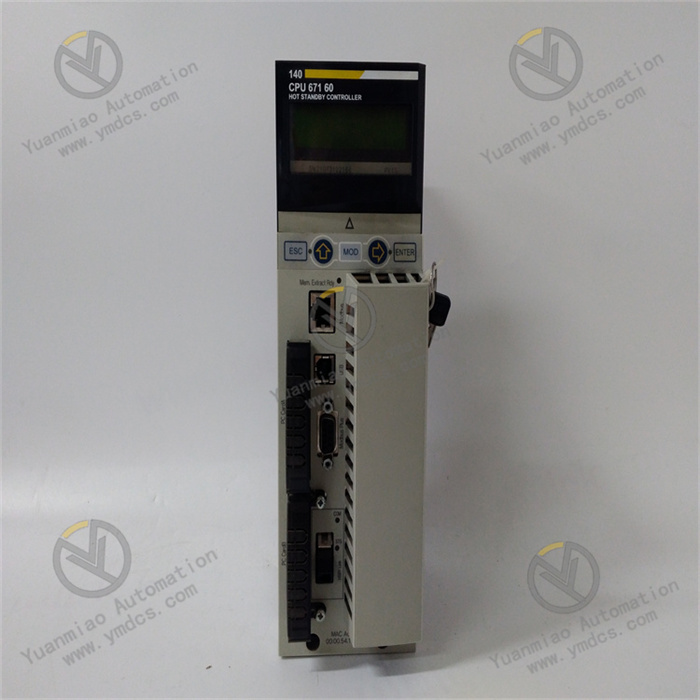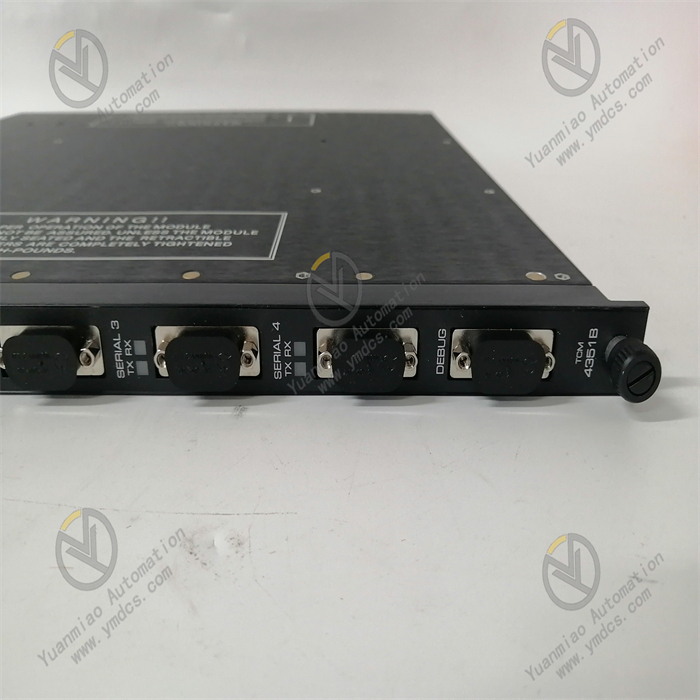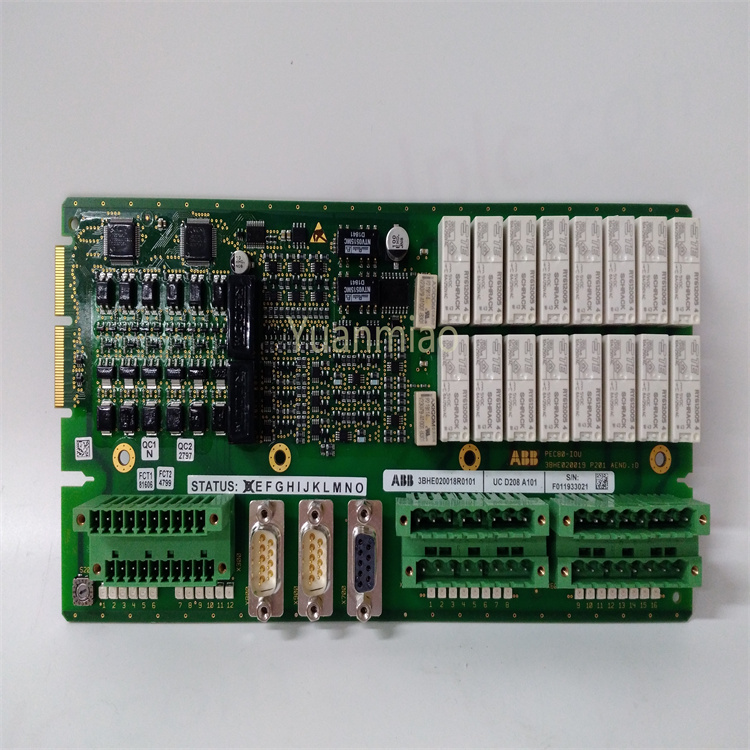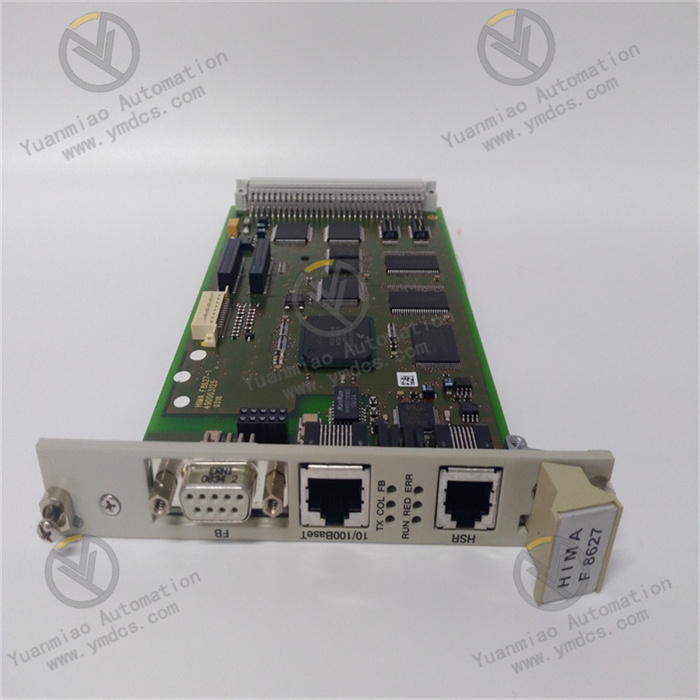Description
GE IC693BEM331
I. Product Overview
GE IC693BEM331 is a high-performance Ethernet communication module belonging to the GE Fanuc Series 90-30 PLC system, and it is the core component for the system to realize Ethernet communication functions. It can provide a stable and efficient Ethernet connection for the PLC system, enabling high-speed data interaction between the PLC and upper computers, human-machine interfaces (HMI), other PLCs, or industrial network devices, playing a crucial bridging role in industrial automation control networks.
From the perspective of hardware architecture, this module is equipped with a high-performance network processor, which has strong data processing and protocol conversion capabilities. It can quickly process Ethernet data frames, realize seamless conversion between different communication protocols, and ensure accurate and timely transmission of data between the PLC system and external devices. The internal integration of rich communication interface circuits and network control logic, and the adoption of advanced signal processing technology effectively improve the anti-interference ability and reliability of data transmission. Even in the complex electromagnetic environment of industrial sites, it can maintain a stable communication state.
In terms of structural design, the module adopts a standardized module structure matching the Series 90-30 PLC system. It has a compact size and can be easily installed on the rack of the Series 90-30 PLC, working together with other modules to form a complete control system. The shell is made of industrial-grade materials, with good anti-vibration and anti-impact performance, which can adapt to the mechanical environment of industrial sites and ensure the long-term stable operation of the module. At the same time, the heat dissipation design of the module is reasonable, which can effectively dissipate the heat generated during operation and avoid affecting communication performance due to overheating.
II. Performance Parameters
(I) Electrical Characteristics
- Power Requirement: The working power of the module is provided by the backplane of the Series 90-30 PLC rack, usually +5V DC. The power consumption is low, generally in the range of several hundred milliamperes, which will not cause excessive burden on the power supply of the PLC system and ensures the stable output of the system power supply.
- Data Transmission Rate: It supports 10/100Mbps adaptive Ethernet communication rate, which can automatically adjust the transmission rate according to the connected network devices and is compatible with Ethernet network environments of different rates. At 100Mbps, high-speed data transmission can be realized to meet the needs of a large amount of real-time data exchange in industrial automation systems.
- Support for Communication Protocols: It supports a variety of industrial Ethernet communication protocols, including mainstream protocols such as Modbus/TCP and EtherNet/IP, and can communicate seamlessly with devices following these protocols, improving the compatibility and versatility of the module and enabling it to be easily integrated into different industrial control networks.
(II) Interface Characteristics
- Ethernet Interface: Equipped with 1 standard RJ-45 Ethernet interface for connecting Ethernet cables to realize physical connection with external network devices. The interface supports Auto-MDIX function, eliminating the need to distinguish between straight-through cables and cross-over cables, simplifying network wiring operations and improving installation convenience. The interface has good electrical isolation performance, which can effectively prevent external voltage interference from affecting the internal circuit of the module.
- Backplane Interface: It communicates with the PLC processor through the rack backplane interface of the Series 90-30 PLC, receives control instructions and data from the PLC, and transmits data sent by external devices to the PLC processor. The backplane interface adopts a reliable electrical connection design to ensure the stability and real-time performance of data transmission, enabling the module to form an organic whole with the PLC system and complete control tasks collaboratively.
(III) Environmental Adaptability
- Operating Temperature: The operating temperature range of the module is 0°C to 60°C, which can adapt to the temperature environment of most industrial production workshops. In high-temperature environments, through reasonable heat dissipation design, the module can maintain stable communication performance; in low-temperature environments, the internal circuit can also start and run normally to ensure the continuity of communication.
- Storage Temperature: In the storage state, it can withstand extreme temperatures from -40°C to 85°C, which can meet the temperature requirements of the product in transportation, storage and other links, ensuring that the module can still be used normally after long-term storage.
- Anti-Electromagnetic Interference: It meets industrial-grade electromagnetic compatibility standards and has strong anti-electromagnetic interference capabilities. Through internal electromagnetic shielding and filtering circuits, it can effectively resist electromagnetic interference generated by equipment such as motors, frequency converters, and electric welders in industrial sites, prevent loss or error of communication data, and ensure the reliability of Ethernet communication.
III. Functional Characteristics
(I) High-Speed Ethernet Communication Function
The core function of the IC693BEM331 module is to realize high-speed Ethernet communication between the PLC system and external devices. It can upload data inside the PLC, such as input and output status, intermediate variables, timer and counter values, to the upper computer or HMI in real-time through Ethernet, enabling operators to monitor the operation status of the PLC system in real-time. At the same time, it can receive control instructions and parameter settings sent by the upper computer or HMI to realize remote control and configuration of the PLC system. In automated production lines, through this module, the PLC can interact with the production management system, upload production data in a timely manner, and receive production plans and process parameter adjustment instructions, improving the intelligence level of production.
(II) Protocol Conversion and Compatibility Function
The module supports a variety of industrial Ethernet protocols and has strong protocol conversion capabilities. When the PLC system needs to communicate with external devices using different communication protocols, the module can automatically complete protocol conversion, convert the data format of the PLC into a format recognizable by external devices, and vice versa, realizing seamless data exchange between devices with different protocols. For example, when the PLC needs to communicate with instruments using the Modbus/TCP protocol and robots using the EtherNet/IP protocol, the module can support both protocols at the same time, ensuring accurate data transmission between different devices and improving the compatibility and flexibility of the system.
(III) Network Configuration and Management Function
The module supports network parameter configuration and management through dedicated configuration software or web browsers. Users can set network parameters such as the module's IP address, subnet mask, and gateway to integrate it into the enterprise's industrial Ethernet network. At the same time, the configuration software also provides rich diagnostic functions, which can display real-time information such as the module's communication status, network connection status, and data transmission statistics, facilitating technicians to monitor and troubleshoot the network. Through the network management function, remote reset and firmware upgrade of the module can also be performed, improving the maintainability of the module.
(IV) Data Security and Reliability Assurance Function
To ensure the data security of the industrial control network, the module has certain data security assurance mechanisms. It supports data verification function, which verifies data during data transmission to prevent data errors caused by interference during transmission. At the same time, the module adopts reliability designs such as a watchdog timer. When the module is abnormal, it can automatically reset and resume normal working status, reducing the communication interruption time caused by module faults and improving the reliability of the entire communication system.


